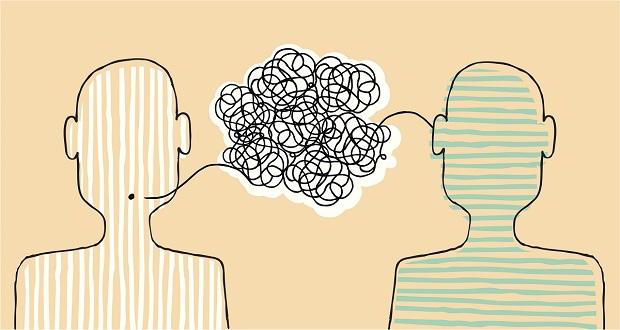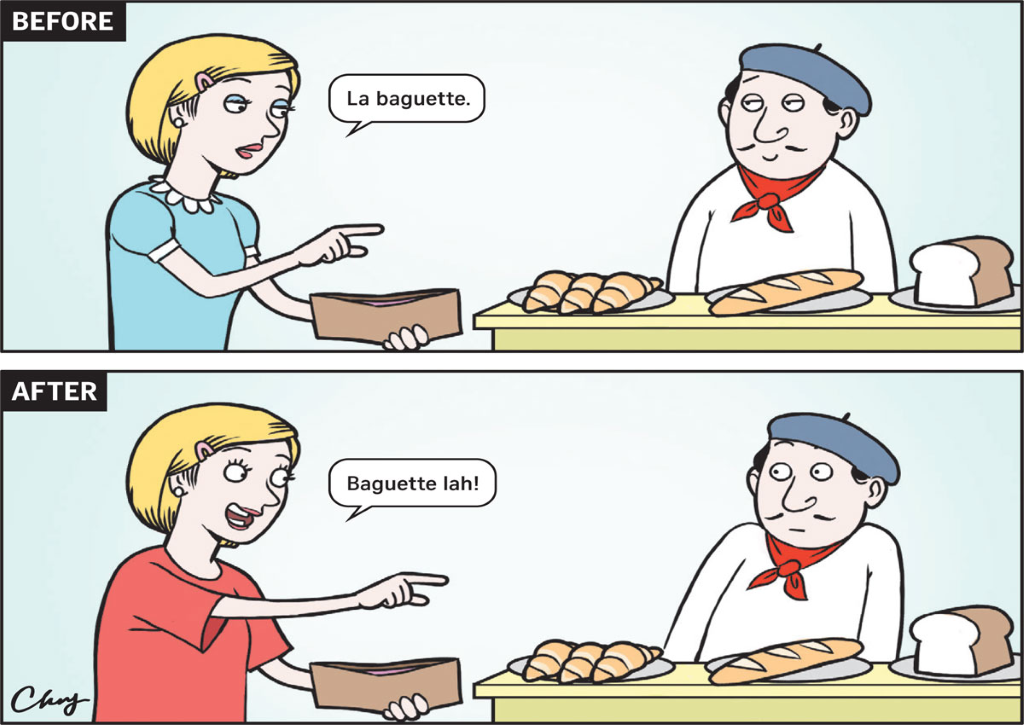Abstract

A critical analysis essay is focused on the description and analysis of a small collection of examples emphasizing a language or literacy conflict. In this piece, the conflict being presented is the idea of code-switching not being accepted in a numerous amount of environments. The stance being taken is how code-switching should be accepted and should be seen as beneficial.
Which Version is Real?
Code switching is when you change your linguistic nature to appeal to the audience. Most people who code-switch are bilingual, they go back and forth between two different languages in two different environments. A person doesn’t necessarily have to be bilingual in order to code-switch, it can also take place within dialects or forms of English. Some examples include Spanish vs. English or formal English vs informal English. A better way to look at this, is when you are at work and you are required to speak in standard English, but your mom calls and you must speak Spanish because she doesn’t speak English. In this case, you are code-switching from Spanish to English. While being in a work setting, you are making use of two languages and alternating between the two. Code-switching can occur in a school setting, business environment and with friends and family. It is an important skill to have in order to maintain a balance between your audience. In simpler terms, you wouldn’t speak the same way to your parents, the way you speak to your friends. Code switching is not acceptable in a professional environment so you must always speak standard English. There is a time and place for everything.
Many people don’t realize the myth of people being defined by their accent. In “Everyone Has an Accent Except Me,” John H. Esling addresses this issue where he talks about how possessing an accent defines and communicates who we are, it all comes down to the feeling of belonging. The movie “Sorry to Bother You” takes the perspective of a black man by the name of Cassius Green who starts to work as a telemarketer; being unsuccessful in talking normally a co-worker suggests using his “white voice” and as he begins to use this type of voice, he immediately gains success but it ends up ultimately changing who he is. The protagonist Cassius Green had a life of struggle living with his uncle unable to pay rent at times, having no privacy with his girlfriend due to him living in their garage. But once gaining his new job, not only does his living situation change but also his personality. When looking at the clip “Lakeith Standfield Use His ‘White Voice’ in Sorry to Bother You” it shows when he is using his “white voice” he in some way is connecting with his callers who are predominantly white males. When we delve into the question “why we should use the white voice in the first place?” We must look at the work setting, in the short clip of the movie it gives us an idea of the ratio of diverse people to white people which is 10:1. This becomes an important factor in why some people are forced in using their “white voice” because the movie conception is that the one white person will be exceptional which will overshadow all the other workers who are Asian, Black or Hispanic. Furthermore, through the immense success that Cassius is getting from using his “white voice”, it is shown how his white supervisor is celebrating with him because of his fruit of his labor; meaning not only do they encourage the use of the “white voice” but also want their workers to use it to succeed. This idea of code switching in the workspace is not unusual however it is discouraged and personally I think it is unacceptable. I believe code switching is unacceptable because not only are you changing who you are, but you lose sight of what work means to you; rather than people bringing their own ideas and personality to the workspace they essentially create a new verion of themselves to be more appealing and satisfy their bosses.
In other cases of code-switching, it makes people feel comfortable and welcome. It not only creates a sense of belonging as I mentioned before, but it also gives importance to the person who you are speaking to. In a cartoon where there is a before and after of an American girl asking for a baguette in another language. In the before picture, the American girl is wearing a blue blouse and is dolled up in makeup, she then says “La baguette” to the bread seller and he has a smile. In the after picture, the American girl comes back wearing a red t-shirt with no-makeup on, she then says “Baguette lah!” to the bread seller and he is frightened. The depiction of the cartoon in the shows how the American girl had code-switched for the bread seller to feel comfortable when he first saw her, she spoke in the language in which he understood hence, he had a smile. The way society is built we must first think how we change who we are to fit in the image that is created by society. Essentially the brand we create for ourselves has become the most important thing that people look at because the formality in which someone speaks is catering to the person you are speaking to; this directly affects the first impression that you are giving but also what the first thought about you will be. By coding switching we are making everyone around us believe in a false image of ourselves because society has made these invisible norms that led has to change ourselves to become a piece in the puzzle, we call society. Not only does the cartoon grasp the idea of the effects of coding switching but also in the movie “Sorry to Bother You” illustrates the change of a person when code switching which supports the myth “possessing an accent defines who we are”.

Lippi Green, an American writer writes “Accent Discrimination and Discriminatory Pretext in the Courts” where she talks about how there are stereotypes against people of color who don’t know how to speak proper standard English. While she delves into accent discrimination, she also mentions how code-switching is not accepted in the media and there is always this notion of standard English always being at the top. The media has this expectation that people must speak a certain way because that represents how they are presented in front of the world. In a Hawai’ian print media coverage of governor John Wasihe’e, “whose code-switching between HCE and creole-accented English is made an issue, and whose grammatical errors are corrected (169).” In this, Lippi Green mentions the strong opinions that are associated with the formation of a dominant language, standard English. There is a prejudice that gets built amongst people of color because they are not able to speak their native tongue. The language attitude that is She is trying to emphasize that we have the power to decide what we want to do with our language, whether it be code-switching or speaking standard English. However, it is never going to be accepted in society because of how the media decides to disregard it and they are unable to fathom the importance of having exposure to another language. The “underlying message is clear: there is a right and a wrong way to talk, and it is perfectly acceptable, even judicious, to censor and punish those who do not conform (169).” Green emphasizes the importance of not being able to adhere to creative expression. Being restricted in the way you speak puts a hold on your cultural ideas and viewpoints. Often, code-switching is a good way of getting certain points across when something that cannot be said or emphasized in one language, but it can be in another. Despite the benefits of code-switching, the media does not accept it, they feel as though it messes up their image as well as makes them look unprofessional. They not only fail to find a purpose in code-switching, they have a tendency of changing people who do not follow their expectations. Just like in the Hawai’ian media coverage, the media decided to correct their grammatical errors which is showing how they were changing the original words to be suitable to the audience.
Code switching is an art, it requires the articulation of knowing when to flip back and forth between two dialects or languages. It is something one should be proud of not be ashamed. It gets implemented in the words of Lippi Green where she talks about the ways it gets implemented in media. There is a right and wrong way of speaking when it comes to be being broadcasted over the world. There is a norm of speaking standard English and people have to change their voices in order to adhere to the norm. That is how they will be respected and taken seriously. In the cartoon, the American girl code-switches in order to give a sense of comfort while the second part of the picture the chef is repelled because she spoke in her own way. Many believe that code-switching allows for more diversity and exposure to various dialects for the audience, but the media doesn’t accept it. Code-switching can be reflective of how you are perceived and can ultimately change who you are as a person. The myth of “Everyone Has an Accent but Me” by John H. Esling is enforced in the movie, “Sorry to Bother You” where it shows how Cassius makes the decision of choosing to use his white voice and ultimately that leads him to losing his identity. He fails to realize how it has taken over him and he can’t seem to stop. It was the choice that he made in order to belong in the workplace and it’s something everyone must do. A choice must be made in life to code switch and ultimately change who you are, or push pass these norms be content with who you are.
Citations
Bauer, Laurie, and Peter Trudgill. Language Myths. London: Penguin Books, 1998. Print.
Lippi-Green, Rosina. “Accent, Standard Language Ideology, and Discriminatory Pretext in the Courts.” Language in Society, vol. 23, no. 2, 1994, pp. 163–198. JSTOR, www.jstor.org/stable/4168513
Sin, Yuen. “Don’t Play, Play – Singlish Is Studied around the Globe.” AsiaOne, 2017, www.asiaone.com/singapore/dont-play-play-singlish-studied-around-globe.
The New York Times. “Lakeith Stanfield Use His ‘White Voice’ in ‘Sorry to Bother You’ | Anatomy of a Scene.” YouTube, YouTube, 2018, www.youtube.com/watch?v=PY9RQFX28j0.

